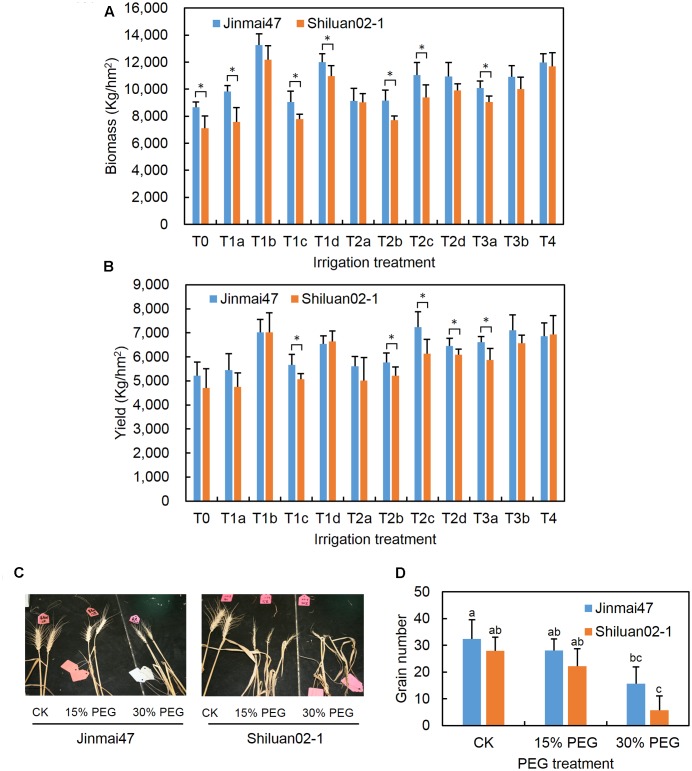FIGURE 1.
Measurement of wheat biomass, yield, and grain number under drought stress conditions. Jinmai47 and Shiluan02-1 were planted in a field under natural conditions and subjected to the following different irrigation treatments: T0, no irrigation during the entire growth stage; T1a, 60 mm irrigation at the jointing stage; T1b, 240 mm irrigation at the seedling stage before winter; T1c, 240 mm irrigation at the jointing stage; T1d, 240 mm irrigation at grain filling; T2a, 60 mm irrigation at both the jointing and heading stage; T2b, 60 mm irrigation at both the jointing stage and grain filling; T2c, 120 mm irrigation at both the jointing and heading stage; T2d, 120 mm irrigation at both the jointing stage and grain filling; T3a, 60 mm irrigation at the jointing, heading, and grain filling stages; T3b, 80 mm irrigation at the jointing, heading, and grain filling stages; T4, well irrigated across all stages. Biomass (A) and yield (B) of the two cultivars were measured after harvest. For the glasshouse experiments, wheat plants were treated with 15 or 30% PEG6000 for 5 days at the YM stage, followed by the normal nutrient solution until maturity. After harvest, images of the ears of the two cultivars were recorded (C) and main stem ear grain number (D) was measured (n = 20). CK indicates control group under normal conditions. All values are the means ± standard errors of three independent experiments. Different letters indicate significant differences (Student-Newman–Keuls test, P < 0.05) in (D). ∗Indicates significant difference (Student’s t-test, P < 0.05) in (A,B).

